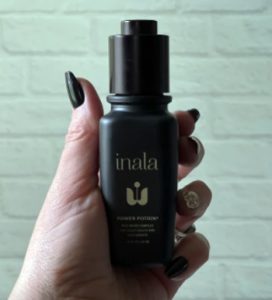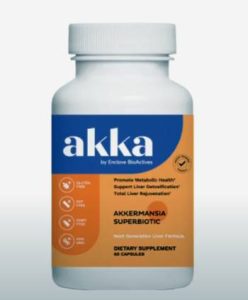If you’re looking for a product that could help ease lingering aches and pains, you might consider purchasing the Signal Relief Patch. I was curious about its claimed benefits and decided to give it a try for my own muscle discomfort.
In this piece, I’ll share my personal experiences, examine the technology, and walk you through the pros, cons, and comparisons to other brands. By the end, I hope you’ll have a clear picture of whether or not this patch aligns with your needs.
My Personal Perspective of Signal Relief Patch
My journey with muscle and joint pain has been a roller coaster. For years, I wrestled with occasional lower back spasms, shoulder tension, and tight hamstrings from workouts. Sometimes, I’d rely on conventional remedies like ointments, over-the-counter painkillers, or heating pads.
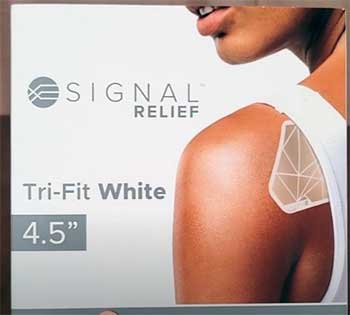
However, I stumbled on the Signal Relief Patch during a late-night online search.
Part of me hoped that this wearable device would provide an alternative pain relief solution.
When I received the patch, I was struck by its straightforward design.
It doesn’t require batteries, there’s no power switch to fiddle with, and the makers claim it can last for up to a year.
That’s a big promise. I also noticed how light and thin it was, which made me think, “Okay, maybe this won’t get in the way of my daily routine.”
After reading reviews—both good and bad—I felt a mixture of anticipation and skepticism.
My first attempt with the patch was to target tightness in my lower back. I placed it against my skin with the adhesive provided. For the first day, I didn’t notice much difference. The second day, I felt slight relief, but it was subtle at best.
I wondered if I was placing it correctly. The product instructions suggest you put it near or on the source of your pain, ideally between the area of discomfort and your spine, if the pain is muscle-related.
I kept adjusting the placement, hoping to find that “sweet spot.” Some folks claim you might need to wear it for multiple days to see its benefits. After three days, I noticed that my back pain wasn’t as pronounced when I moved.
Was it the patch?
My honest impression was that it helped somewhat, but it wasn’t a magical fix. My pain went from about a 7 out of 10 to maybe a 5 or 6. Still, that slight improvement was better than nothing.
Understanding The Technology Behind Signal Relief Patch
Signal Relief Patch promotes something the company calls “Signal Technology,” which supposedly works like an antenna, funneling away discomfort signals. It’s a concept that might sound odd at first.
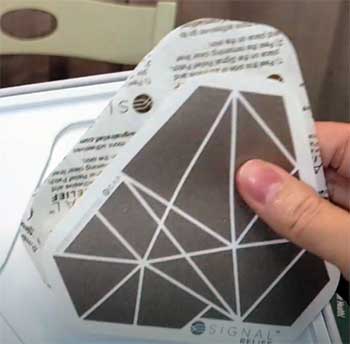
The company states that it’s not working through heat or chemicals but rather through a type of microcurrent-like mechanism that interacts with your body’s pain signals.
No batteries or wiring are needed, which is convenient. Instead, the patch is constructed from layers of thin material.
These layers are meant to interact with the body’s electrical impulses, essentially changing how these signals are transmitted.
The claim is that by redirecting this activity, the patch can help reduce the sensation of pain. In theory, it’s an interesting idea.
When I put on the patch, I didn’t feel any tingling or heat, unlike some other pain patches that have a chemical effect.
It remained cool and comfortable on my skin. I moved around, went about my day, and simply forgot it was there. It was only at night when I was lying down that I’d notice any difference in my pain level.
I do want to point out that this patch is marketed specifically for muscle and skeletal discomfort, not for nerve issues. Reviews from people dealing with nerve pain, especially in their feet, indicate that it might not be the best fit.
If your pain has a strong nerve component, you should probably explore other options. The patch seems more aimed at the aches and twinges that come from sore muscles, mild strains, and possibly mild joint discomfort.
Features And Functionality of Signal Relief Patch
Before I discuss pros and cons, I want to highlight some features:
- Durable and Reusable: The product marketing says you can reuse the same patch for up to a year. This is a standout selling point for those tired of one-and-done adhesive strips. In principle, that could make it a cost-effective solution over time, provided you see results.
- Cost Effectiveness: According to the company, using the patch comes down to just under 40 cents per day if you keep it for the entire year. On paper, this is much cheaper than many recurring treatments. However, the upfront price might feel steep, especially if it doesn’t bring the relief you expect.
- Ease and Versatility: You can place the patch on your skin or even over clothing, as long as it’s near the source of your discomfort. They do offer an adhesive that supposedly holds it in place for a couple of uses. Once the adhesive wears out, you might need to buy more tape or use your own.
- No Batteries or Wires: The built-in technology is meant to work passively, eliminating the hassle of cables, charging, or battery replacement. That sounds appealing if you don’t want to deal with multiple steps whenever you experience discomfort.
- 45-Day Guarantee: The product comes with a 45-day money-back guarantee, which is beyond some retailers’ return windows. This theoretically gives you a chance to try it for a while to see if it genuinely lessens your pain.
Because of these features, the patch can look like a game-changer at first glance. But as you’ll see in the next sections, user experiences vary significantly, and not all feedback is glowing.
The Pros of Signal Relief Patch
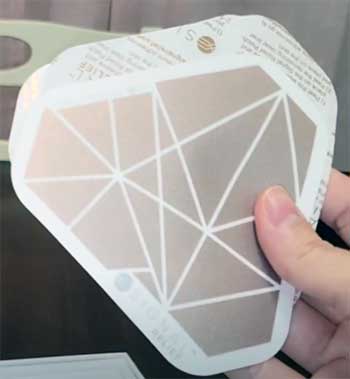
- Moderate Relief for Some Muscle Pain: I found slight relief for my back tension when I placed the patch properly. My pain didn’t go away fully, but it felt like it diminished to a level that allowed me to move more freely. That moderate relief can be valuable if your pain is persistent or disrupts daily activities.
- Potentially Cost-Effective Over a Year: If it works for you—and that’s a big if—the daily cost can end up being cheaper than repeated over-the-counter medication or continuous therapy sessions. It might fit into a long-term budget more easily than frequent doctor visits or prescriptions, especially if those alternatives aren’t covered by insurance.
- No Chemical Interactions: Because the patch doesn’t rely on substances like menthol or capsaicin, it’s a drug-free approach. This is a plus if you’re sensitive to topical creams or if you prefer not to ingest additional medications.
- Ease of Use: You can place it on the part of your body that needs help and go on with your day. There’s no sensation of heat, cold, or electrical buzzing, which might be more comfortable if you don’t like the tingling some products cause.
- Longer Trial Period: A 45-day money-back guarantee gives you some leeway to experiment with placements and see if it delivers. That’s a bit more generous than what I’ve experienced with some other similar products, which might only offer a 30-day return window at best.
The Cons of Signal Relief Patch
- High Initial Cost: One of the biggest sticking points is the price tag. It’s not cheap to buy one of these patches, especially if you’re looking to target multiple areas at once. You might end up needing more than one if your pain is spread out.
- Mixed Results Across Different Pain Types: Notably, it doesn’t seem helpful for nerve-related issues. Several people with significant nerve conditions have stated it did nothing for them. If your situation involves sharp, nerve-based pain, this patch might not be the best fit.
- Inconsistent Pain Relief: Even among those who benefit, the degree of relief varies. Some see a noticeable difference, others feel only slight improvement, and quite a few feel no change at all. This inconsistency is probably the number one reason many are on the fence.
- Additional Cost for Adhesives: The provided adhesive can wear out after a couple of uses, so you might need to purchase more from the company or find alternatives. While you can hold it in place with medical tape, that might not be very convenient or visually appealing.
- Limited Flexibility: If you need to place it on a foot or a more curved area, its stiffness might make it uncomfortable or cause it to peel off. Users have reported that it’s difficult to apply on areas that move a lot or don’t have a flat surface.
- Not a Guaranteed Quick Fix: The patch could require days or weeks of usage before you figure out the best placement or see any benefit. If you want something that works immediately—like a warm compress or a typical pain patch that floods the area with a soothing substance—this might not meet your expectations.
Also Read: Are Wellnee Pain Relief Patches Any Good?
Care Tips For Signal Relief Patch
Over time, I’ve picked up some maintenance suggestions:

- Proper Placement: Experiment with different spots around the painful area, especially closer to your spine if it’s back-related. The instructions note that you might need to shift it slightly to find optimal relief.
- Clean Application Surface: If you’re sticking it directly on your skin, make sure the area is clean and dry. This helps the adhesive last longer. Alternatively, if you’re putting it on your clothes, ensure the fabric isn’t too thick or textured, as that could reduce the patch’s effectiveness.
- Rotate Usage: Some people find that leaving the patch on for a couple of days and then taking a brief break can help. I personally wore it non-stop for 48 hours before removing it to let my skin breathe. This also prolongs the life of your adhesive.
- Replace Adhesives Regularly: The manufacturer’s tape might only be good for a few uses before it loses its stickiness. If you notice it peeling off or sliding around, it’s time for a new adhesive. You can also try medical tape or even an elastic bandage, depending on the body part.
- Handle with Care: Since it’s supposed to last up to a year, don’t toss it around or store it loosely. Keep it in a small protective pouch or in a dry place so it won’t get bent, scratched, or excessively dirty.
- Observe Your Body’s Response: Pay attention to how you feel over the course of a few days. If there’s no improvement, consider repositioning or different routines—like wearing it only during sleep, or only during the day while active.
Comparing Signal Relief Patch To Other Brands
You might wonder how it stacks up against similar products. In recent years, a wave of drug-free pain relief devices has emerged. Some are TENS units with electrodes, others are patches that provide heat or cold therapy, and a few, like the Signal Relief Patch, claim to harness the body’s natural electrical signals.
- Conventional Heat Patches: Typical heat-based patches might feel soothing immediately, but you can only use them once. They also rely on chemicals that heat up when exposed to air. If you prefer the sensation of warmth as relief, those patches might be more satisfying. Signal Relief doesn’t create any heat, so if you crave that feeling, you won’t get it here.
- TENS Units: A TENS device uses electrical pulses you can adjust in intensity. Some find TENS provides a more noticeable, targeted approach, but the downside is you’re tethered to a small machine. You also need to replace the sticky electrode pads fairly regularly. Signal Relief, in comparison, is simpler to wear but doesn’t let you control intensity levels.
- Topical Gels and Creams: Many people rely on menthol-based gels or lotions for localized pain relief. The immediate cooling or heating sensation can be satisfying, but it fades quickly, and you have to reapply. The Signal Relief Patch aims to provide continuous relief without reapplication, provided you can get it to stay in the optimal spot.
- Other ‘Signal-based’ Patches: A few emerging companies promise similar technology. Reviews vary for them too, typically highlighting the same issues: it works for some, not for others, and can be pricey. Because the entire category is still relatively niche and not heavily researched, it’s challenging to separate what’s genuine from what might be clever marketing.
From my perspective, the biggest difference with the Signal Relief Patch is the emphasis on being battery-free and drug-free. That’s fairly unique in a market dominated by TENS units and heat patches. However, the results can be so unpredictable that it’s difficult to wholeheartedly suggest it over more traditional methods.
Also Read: Is Koprez Plantar Fasciitis Sleeve Worth It?
Honest Reflections On Negative Feedback
I’ve come across quite a few user comments that are far from glowing:
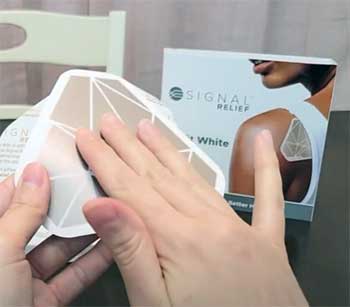
- Some folks label it a ‘Scam’: They got zero relief, claiming they might as well have put a simple bandage on. Given the steep price, they felt ripped off. One user mentioned dealing with severe back pain from a car accident and found no help from this patch, concluding it was false advertising.
- Others find partial relief: They feel some improvement, especially for muscle tightness, but nowhere near the 100% pain elimination they hoped for. Some also mentioned the patch fails to treat nerve-related pain.
- Concerns about additional costs: People sometimes forget they’ll need more adhesive or alternative tape if they want to keep using the same patch. If you’re on a tight budget, this can become an unwelcome extra expense.
- Lack of flexibility: The patch’s stiffness was a common complaint, especially for curved areas like feet or knees that bend frequently. It can be tough to secure, and if you don’t have the right tape, it may not stay put.
The takeaway? While some owners might get a reduction in their muscle aches, it’s not a surefire solution for everyone. If you do try it, keep your expectations realistic and be prepared to return it if it doesn’t perform as promised.
Is Signal Relief Patch Worth It?
I’ve personally seen moderate improvements with my lower back pain. But for a product that costs as much as this patch does, I can’t say it’s the ultimate fix for all forms of discomfort.
After reading numerous comments, some folks do derive real relief, while others find it completely ineffective. That wide range of experiences should make any prospective buyer cautious.
The patch might be worth testing if:
- You experience frequent muscle stiffness or mild aches.
- You have the financial means to purchase the patch without stress.
- You appreciate a hands-off, drug-free method.
- You’re comfortable with the idea of returning it if you’re unsatisfied.
However, I wouldn’t push it if:
- You have severe nerve issues or chronic pain that is debilitating.
- You’re on a tight budget and can’t risk the initial cost.
- You prefer immediate relief methods like heat, cold, or pain medications.
- You find adhesives or stiff patches uncomfortable to wear long-term.
I respect the patch for being a neat concept and for providing a 45-day money-back guarantee. But I also can’t ignore the high number of disappointed users who feel they got minimal to no relief.
If you’re someone who’s curious yet cautious, you might want to see if a friend or family member owns one and can lend it to you for a quick trial. Although not everyone has that luxury, it’s a thought worth considering before committing financially.
Also Read: Is Refresh Back Stretcher Worth It?
Frequently Asked Questions (FAQ)
The results seem to vary a lot between individuals. In my experience, it helped reduce the intensity of my muscle pain from a 7 to a 5 or 6, but some people report no relief whatsoever. It tends to be most useful for muscular discomfort rather than nerve-based pain. Because of these mixed outcomes, it’s hard to guarantee it’ll work for everyone.
The company states that each patch can be used for up to a year. However, you’ll likely need to replace adhesives along the way to keep it properly secured. The patch material itself might be durable, but you still need to maintain it, store it correctly, and handle it gently for it to stay functional.
It can work for some individuals, particularly those dealing with minor muscle discomfort. In my case, I found a slight improvement, but it was not life-changing. Others who needed relief for significant or nerve-related pain often report little to no benefit. It’s best to set realistic expectations, and if you do try it, remember there’s a 45-day window for returns if it doesn’t help.
The company describes the patch as containing “Signal Technology,” which functions like a microcurrent device, potentially changing how your body interprets pain signals. While the concept sounds intriguing—acting like an antenna to redirect discomfort signals—robust scientific studies to confirm its efficacy are limited. It doesn’t rely on heat, chemicals, or batteries but instead passively interacts with your body’s electrical impulses.
Final Thoughts
If you’re convinced the Signal Relief Patch might help address your specific muscle aches, you can try it, especially with the 45-day money-back guarantee. It’s not a miracle cure, and many reviewers say it falls short of expectations.
Still, I did notice some relief with consistent usage and careful placement. Ultimately, whether you choose to buy it depends on your budget, your type of pain, and how comfortable you are testing a product that may or may not work for you.

